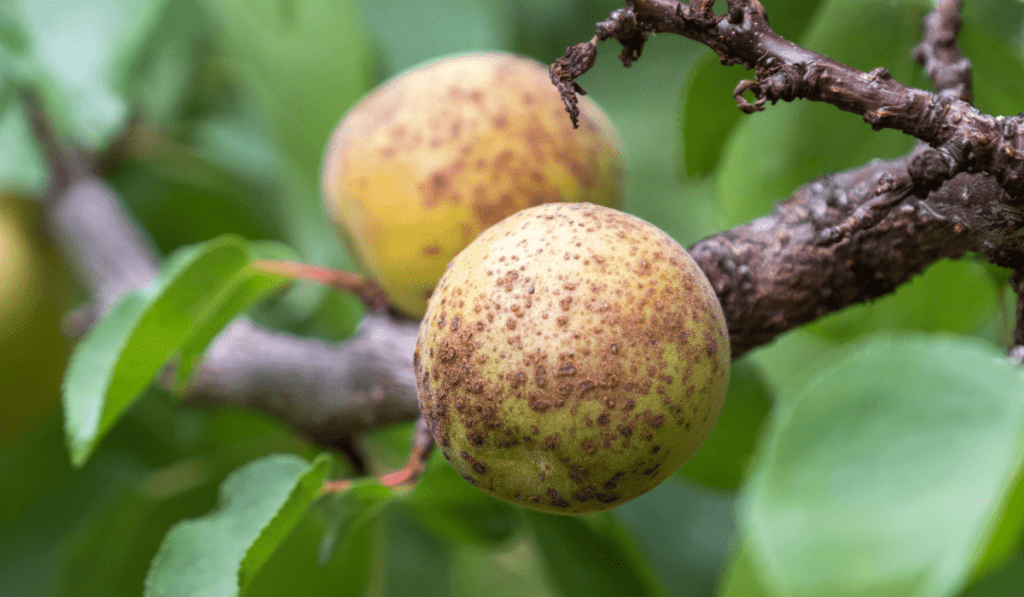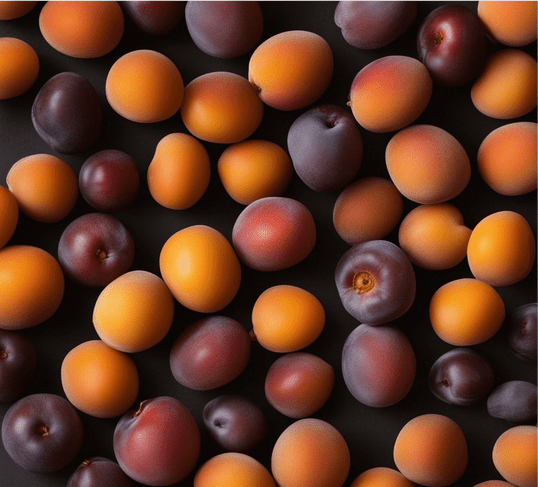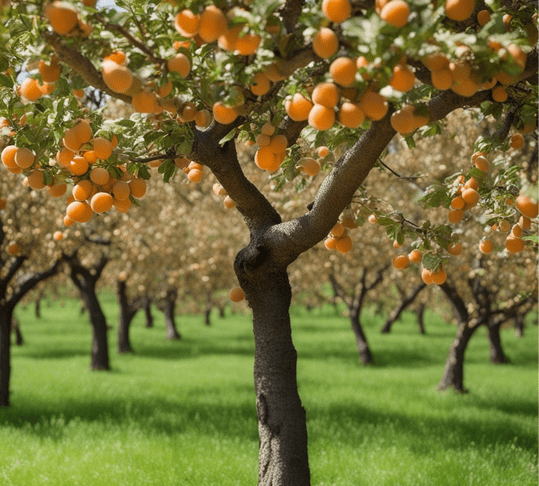Apricot trees are delightful additions to any orchard or garden, but like all plants, they are susceptible to various diseases. Identifying these diseases, understanding their symptoms, and knowing how to manage and prevent them is crucial to maintaining the health and productivity of your apricot trees. In this guide, we’ll explore ten common diseases that can affect apricot trees and provide insights into their identification, symptoms, management, and prevention.
1. Bacterial Canker
- Identification: Look for oozing cankers on branches and trunks, often with amber-colored gum.
- Symptoms: Dieback of branches, sunken cankers, and amber gum exuding from affected areas.
- Management: Prune infected branches well below cankers, and destroy them. Apply copper-based fungicides.
- Prevention: Avoid wounding the tree, and maintain proper pruning practices.
2. Brown Rot
- Identification: Observe brown, rotting fruit with fuzzy growth.
- Symptoms: Fruits become mummified and develop brown, fuzzy fungal growth.
- Management: Remove infected fruit promptly and prune to improve air circulation. Apply fungicides before bloom.
- Prevention: Keep the area around the tree clean and ensure good air circulation.
3. Peach Leaf Curl
- Identification: Notice curled, distorted leaves with red or purple discoloration.
- Symptoms: Distorted leaves that may fall prematurely.
- Management: Apply fungicides in late winter or early spring before buds swell.
- Prevention: Spray with fungicides as a preventive measure.
4. Powdery Mildew
- Identification: Look for a white, powdery coating on leaves and fruit.
- Symptoms: Leaves and fruit covered in white, powdery substance.
- Management: Prune to improve air circulation and apply fungicides as needed.
- Prevention: Maintain good spacing between trees and ensure proper ventilation.
5. Fire Blight
- Identification: Observe wilting, blackened branches resembling fire damage.
- Symptoms: Branches with a “burned” appearance, often with oozing bacterial exudate.
- Management: Prune infected branches at least 8 inches below visible symptoms. Use antibiotics in severe cases.
- Prevention: Avoid excessive nitrogen fertilizer and prune during dry weather.
6. Shot Hole Disease
- Identification: Notice small, round holes in leaves.
- Symptoms: Circular holes in leaves, giving them a “shot hole” appearance.
- Management: Prune and destroy affected leaves. Apply copper-based fungicides.
- Prevention: Maintain good hygiene by cleaning up fallen leaves.
7. Leaf Spot
- Identification: Look for brown or black spots with yellow halos on leaves.
- Symptoms: Circular spots on leaves with dark centers and yellow borders.
- Management: Prune to improve air circulation and apply fungicides as needed.
- Prevention: Maintain good sanitation practices.
8. Fruit Cracking
- Identification: Observe cracks in the fruit skin.
- Symptoms: Split or cracked fruit skin, often near the stem end.
- Management: Maintain consistent watering to prevent fluctuations in fruit growth.
- Prevention: Ensure even watering and avoid excessive irrigation.
9. Crown Gall
- Identification: Notice swollen, tumor-like growths on roots and lower trunk.
- Symptoms: Tumor-like growths on roots and lower trunk.
- Management: Remove infected tissue and destroy it. Plant disease-free stock.
- Prevention: Use disease-free planting material and maintain proper soil health.
10. Root Rot
- Identification: Observe wilting and decline of the entire tree.
- Symptoms: Generalized wilting, decline, and poor growth.
- Management: Improve soil drainage and avoid overwatering. Fungicide treatment may help.
- Prevention: Ensure proper soil drainage and avoid waterlogged conditions.
Regular monitoring, timely action, and good cultural practices are essential for managing these common diseases of apricot trees. By identifying symptoms early, implementing effective management strategies, and adopting preventive measures, you can help your apricot trees thrive and produce healthy, delicious fruit.



